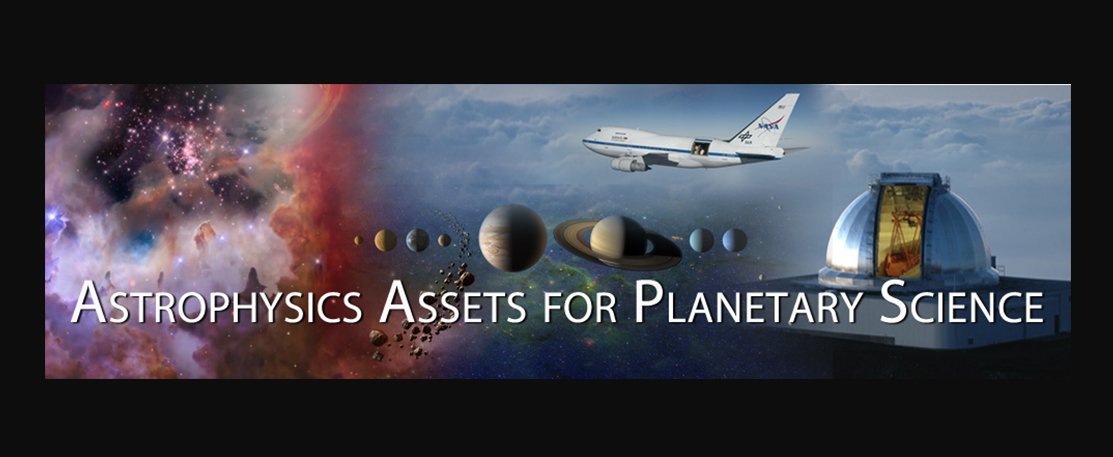
NASA’s Astrophysics Investments Website for the Planetary Science Community
Jim Green, Director, Planetary Science Division, NASA
Paul Hertz, Director, Astrophysics Division, NASA
NASA’s Astrophysics Missions are available for the use of the entire science community to advance important science objectives, independent of which NASA Division manages the programs. The planetary science community has benefited from both using the tools and science derived from NASA’s astrophysics investments. This has been occurring for a long time and we want to highlight this great relationship that our two disciplines have continued to develop over the years. We truly believe that the collaboration benefits both scientific disciplines and furthermore, that the best insights come from interdisciplinary interactions between many scientific fields.
With the goal of engaging the planetary community in taking part in further potential observations from astrophysics missions and continued astrophysics collaborations, we held workshops at the Division of Planetary Science (DPS) meeting through a collaboration of the Astrophysics and Planetary Science Divisions. As a result, and with the goal of providing continuous information to the community, we are creating a website that would keep updates about the missions proposals schedules as well as links to white papers and presentations that would help our community.
Please visit: http://www.lpi.usra.edu/astrophysicsassets/
We plan to archive the presentations given at our workshops and keep an updated calendar relevant to our community.
This website is not meant to replace the missions websites, but to provide as much as possible, a portal for our community interested in using those investments.
It is quite apparent that we have been experiencing a renaissance of planetary science using astrophysics missions. We deeply appreciate how these two communities of scientists have started to work together in understanding the origin and evolution of our Solar System and all the diversity of objects within. When we look at the sky at night, we now know that the stars we see have solar systems similar to our own. This is the new paradigm that has drawn us more closely together.
